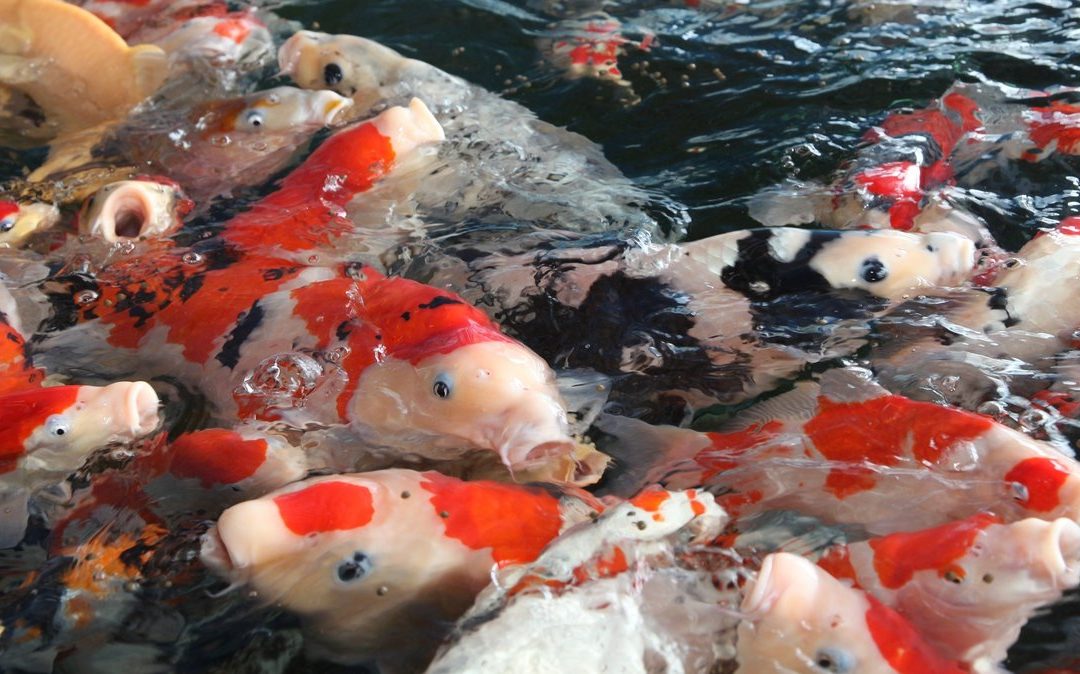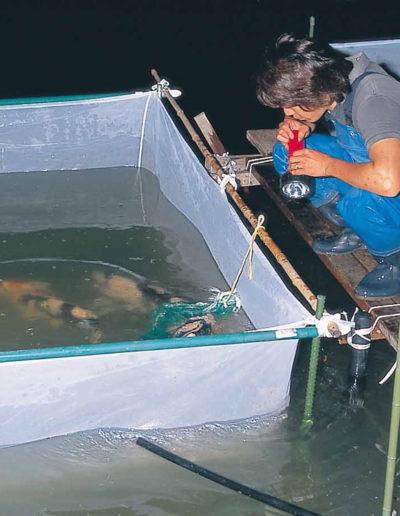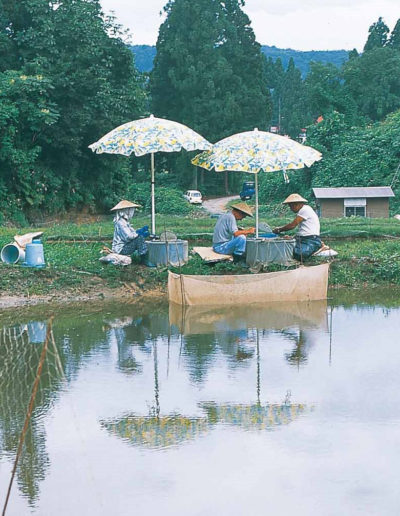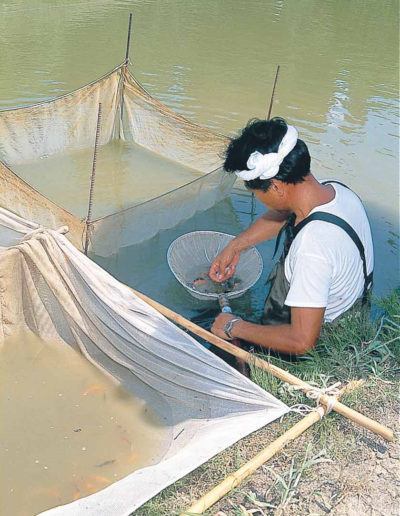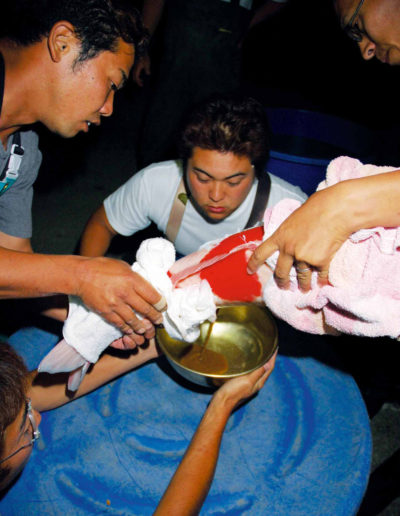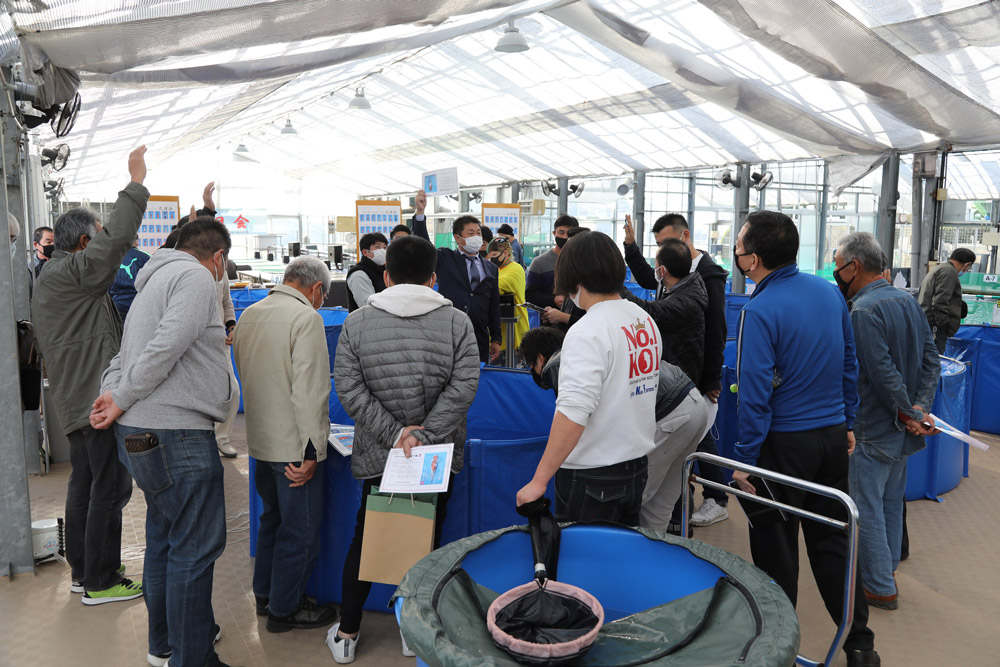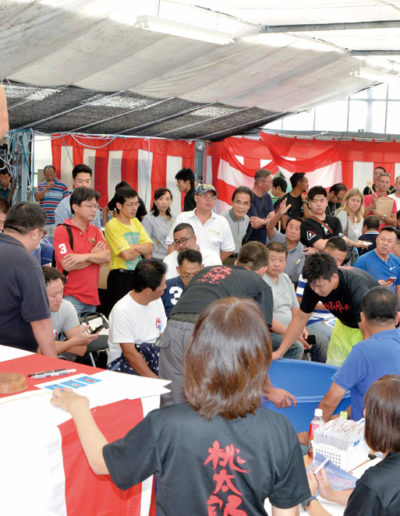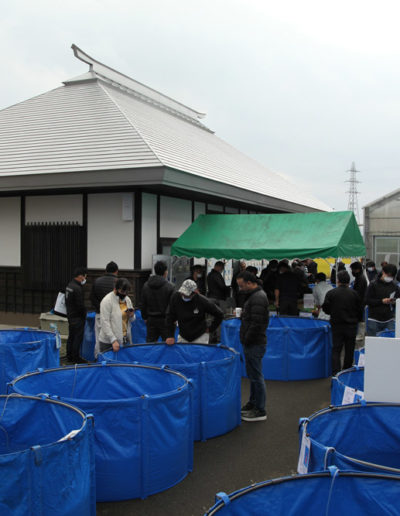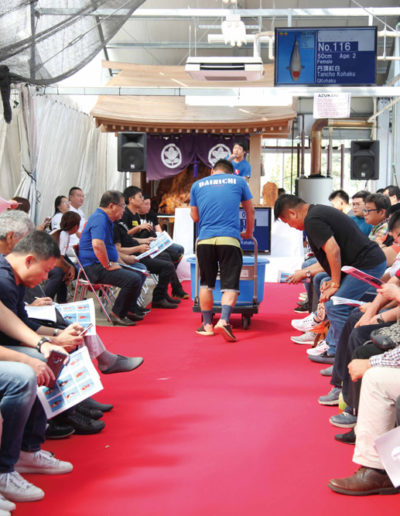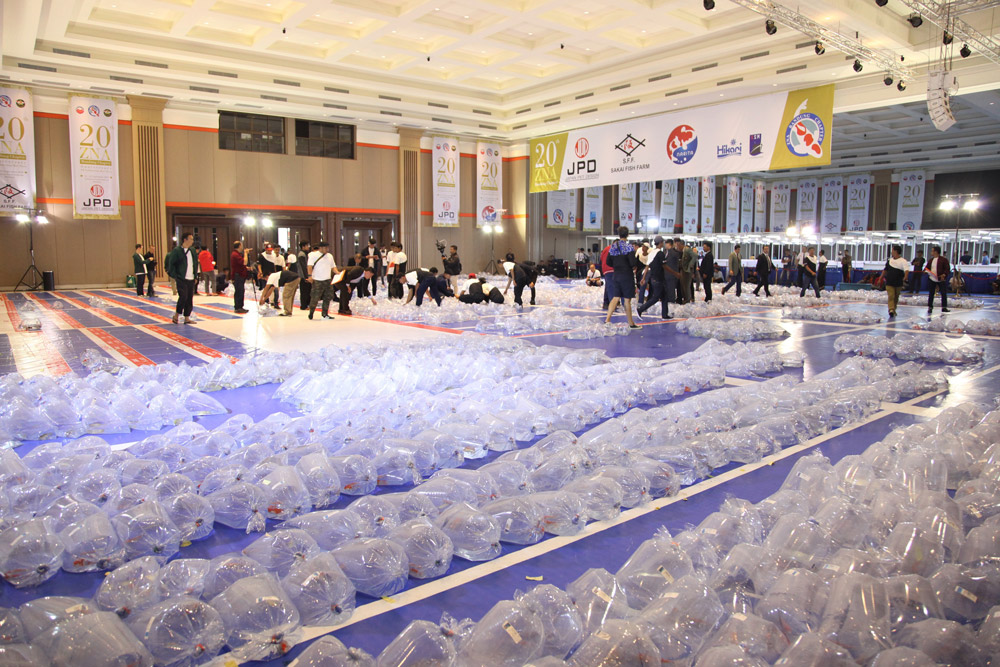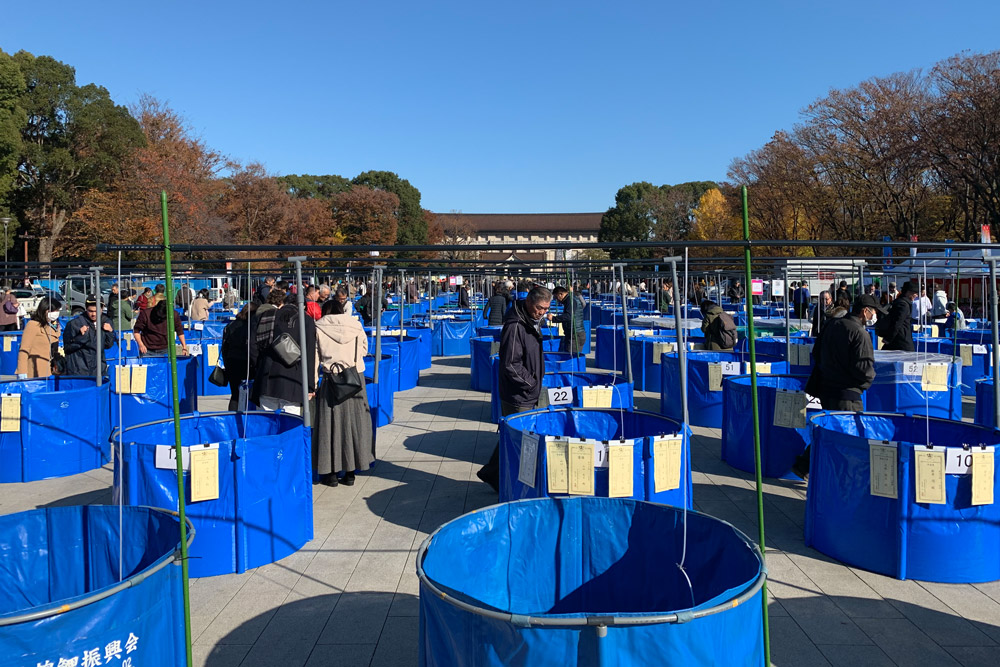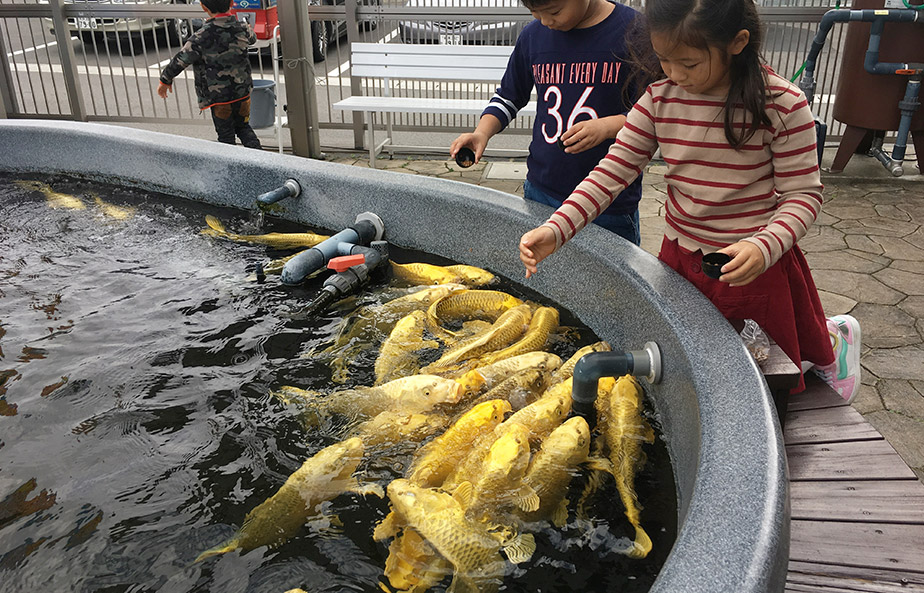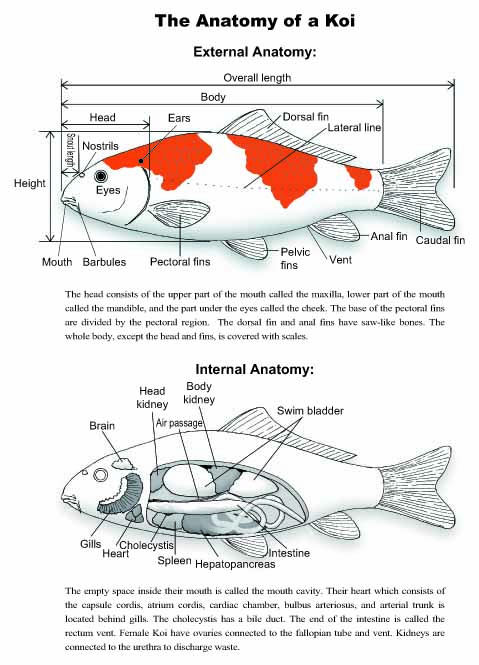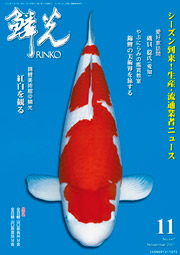The Year of the Koi-Breeding District
The koi harvest is in the middle of October, which is the start of the koi season. Young koi rapidly grow between the spring and the summer. They are scooped out of the mud ponds in the fall, and exhibited or sold in many koi shows and events.
In the spring, koi breeders prepare for the breeding of koi. Koi spawn between late April and early July, when the temperature is around 20 degrees Celsius. First, they set an implantation net in a fish preserve, and place male and female koi in it. If the mating couple gets along well with each other, a male begins following a female. Female koi usually spawns between midnight and the early next morning. In recent years, the number of koi breeders who adopt artificial spawning has been increasing.
Koi breeders select koi parents after considering the lineages and the potential of the koi, such as body and quality. Once the eggs are hatched, the fry are placed in the breeding pond and undergo strict selections at several phases of their growth.
Some koi enthusiasts entrust their koi to reliable koi breeders/dealers for raising them in mud ponds. Keeping koi in the mud pond requires breeders’ years of experience in giving the proper amount of feed, countermeasures against diseases and parasitic worms, predatory animals, and disasters.
Shipping & Sales of Koi
After being harvested from the mud ponds, the koi are kept in the facilities for passing the winter. During the period when koi breeders empty their mud ponds, many koi dealers from in and out of the country visit Japan to purchase Nishikigoi. They take the purchased koi back and hold sales or displays with the exhibits on sale. From the middle of October till early November is the best time for koi lovers to purchase koi. It is fun to visit nearby koi shops for koi hunting. Many koi auctions are held on autumn and spring. It is time for wholesale dealers to buy in Nishikigoi.
Generally, Nishikigoi are considered to be expensive, but their prices start at 500yen per koi. Nishikigoi fans include a wide variety of people. Koi are available at various places, such as koi shops, pet shops, markets, mail-order sales, and online sales. We recommend you have a reliable koi shop in your neighborhood so that you can ask for after-sales service and consult for advice on the koi you purchased.
Koi Shows
At koi shows, entries are first classified by their sizes and varieties, and then their bodies, quality and dignified appearance are examined.
There are roughly two types of koi contests; those held by breeders and dealers, and by hobbyists group.
In Japan, koi shows are held mainly in October, November, March and April. Most of the koi shows are open to the public. People visit koi shows with different purposes, such as promoting friendship between koi dealers and koi hobbyists, improving one’s eye for Nishikigoi, and making a profound study of both breeding and keeping Nishikigoi.
Koi shows are popular overseas as well. There are some big shows held in Europe and Asia. Opening and award-giving ceremonies are held on a grand scale.
Habits and Characteristics of Nishikigoi
Koi is a pacific, freshwater fish. They are easy to be kept as a pet because of their docility. They are not attached to a territory, nor do they have a leader. Some people call them a “symbol of peace”. Koi are omnivorous.
They can easily adapt themselves to circumstances too. You can keep them in many parts of the world. However, they become weak and sick by sudden changes in water temperature. Without a sudden change of water temperature or quality, koi don’t die easily.
Koi is a long-lived fish. They can be a lifelong friend. Though they can compete in koi shows up to 15 years old at best, some people enjoy keeping koi over 50 years old.
The Point of Koi Appreciation
Admiring the beauty of a koi’s swimming manner is one of the pleasures of koi keeping. There is no other koi with the same marking pattern created by various colors. When a photo of a koi is taken, the head is always facing the photographer. That is because the koi looks most beautiful when it is swimming towards the viewer who is viewing from the side of the pond while focusing his or her eyes on the back of the fish. Suppose you are going to paint on the koi’s body, the wider the fish’s body is, the more room you have to paint.
Regardless of the varieties of koi, the most important point of view is the body. A koi with a well-balanced spindle shape is worthy of the name “King of ornamental fishes.” Coloration, marking patterns, luster, and orderly rows of scales are of secondary importance.
As Nishikigoi came to be called Kokugyo, their exotic beauty has captured many foreign koi enthusiasts’ hearts. Koi keeping has spread all over the world.
Find About History of Nishikigoi
To learn the most about koi, subscribe and become a paid member of RINKO Online!

